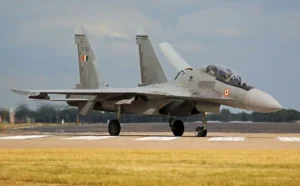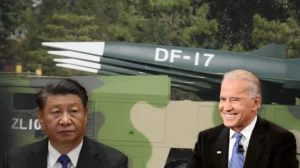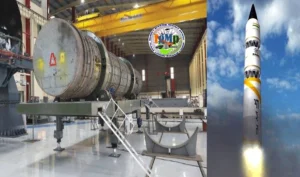Source : Shephard

Bangalore-based NewSpace Research and Technologies completed the delivery of a ‘swarm’ of 100 UAVs to the Indian Army this month. The army refers to them as autonomous surveillance and armed drone swarm (A-SADS).
Following an RfI published in mid-2021, a $15 million fast-track contract was awarded in September 2021, giving the Indian Army its first UAV swarms.
NewSpace Research and Technologies stated that all UAVs had been handed over by 2 March. They included two types of UAV – the Beluga hexacopter and Nimbus Mk-III quadcopter.
Both feature a 50km radius of operation and 3h endurance. Befitting the mountainous terrain that the Indian Army must operate in, they can fly at a ceiling of 20,000ft.
Speaking about its products, the company commented, ‘Unmanned heterogeneous swarming UAVs empower the military with effective resource utilisation.’
It added that, ‘AI-enabled collaborative UAVs with distributed intelligence deliver asymmetric benefits in various missions.’
Agents within the swarm can react independently to emerging situations and after being fed the same high-level mission goals, they can collaborate amongst themselves on the go.
The Indian Army performed a live demonstration of a 75-UAV quadcopter swarm for the first time during a parade on 15 January 2021. However, a mere 100-UAV swarm is quite a small number, especially considering the border tensions with China and Pakistan that confront India.
In other news relating to NewSpace Research and Technologies, on 15 February, BAE Systems announced that it had forged an MoU with the Indian startup at Aero India 2023 to ‘explore opportunities to collaborate in next-generation uncrewed systems and associated technologies’.
NewSpace commenced operations in 2018, and since then its 200+ staff have delivered more than ten projects in areas such as UAVs, robotics, AI modules and augmented reality and virtual reality simulations.
Sameer Joshi, the firm’s CEO, said: ‘NewSpace is working on the FUTURE (Fused Teaming with Uncrewed Rapid Effects) initiative using a variety of unmanned systems to generate mass over a region of interest. Here a dedicated collaboration with BAE Systems, who are a global leader in next-generation multi-domain missions and technologies; will help both sides explore mutually beneficial engineering and product development opportunities.’
In mid-2022, NewSpace showcased another new UAV that employs a flying wing configuration with winglets.
NewSpace is also collaborating with HAL to develop a solar-powered high-altitude pseudo-satellite aircraft called Combat Air Teaming System (CATS) – Infinity. Collaboration also extends to the CATS Air-Launched Flexible Asset – Swarm (ALFA-S), an air- or canister-launched twin-winged loitering munition.
Another cooperative programme with HAL is the twin-engine CATS Warrior loyal wingman, which should commence flight tests next year. This UCAV project commenced in 2018.
In other UAV news, EndureAir has delivered Alakh multirotor nano-UAVs to the Indian Army. In conjunction with the Indian Institute of Technology in Kanpur, work on the Alakh commenced in early 2022, with flight tests later that year.
The Indian Army lodged an order in June 2022 for an unspecified number of these UAVs suitable for ISR, counterinsurgency and counterterrorism tasks, and these had become operational by February 2023.
Measuring 200 x 175mm and weighing just 250g, the Alakh has four detachable arms equipped with landing legs, and four three-bladed propellers. It can cruise at 60km/h, and has a 2km range and 25-minute endurance.






